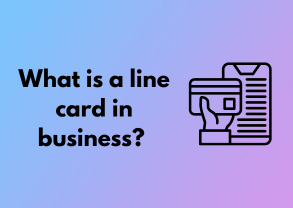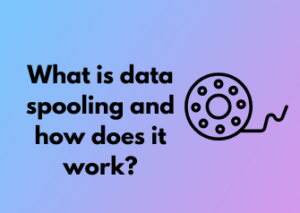Let’s take a trip down memory lane to understand the humble beginnings of what we now call a “line card.” At its core, a line card is quite simply a document or resource used in business to list products or services offered by a company. But where did this idea come from, and why has it become such a critical piece of communication in the business world?
Back in the day, physical line cards functioned as compact catalogs or listings that sales representatives could carry around to provide potential clients with a quick, no-fluff overview of what they were offering. Picture it—early sales teams on the ground, visiting prospects with printed line cards tucked into their briefcases. These cards made it easy to quickly communicate a company’s offerings without flipping through pages of bulky catalogs or relying on laborious verbal explanations. Efficiency was key, and the line card delivered exactly that.
As businesses diversified their offerings, the concept of the line card began to scale. It wasn’t just about making a list anymore; it was about efficient storytelling. Although the line card started as a simple document in the hardware, manufacturing, and tech industries, it spread quickly across sectors wherever businesses needed clear, digestible communication about their product scope. Today, the principle of the line card lives on, albeit with modern twists.
Definition: Boiling It Down to the Essentials
If we had to define the line card today, we might say it is a “key communication tool that provides a curated overview of a company’s product lines or service capabilities.” It’s part-list, part-sales strategy, and all about giving just the right amount of information. A well-devised line card should answer these core questions:
- What does the company offer? It should include an exhaustive but concise listing of products or services.
- Who is supplying these products? Partnerships with manufacturers or collaborators often feature prominently.
- Why should a customer consider these offerings? Think of the line card as a tool to spark interest, offering solutions to problems without diving into mind-boggling details.
Evolution Over Time
While the early versions of line cards were product-focused, today’s iterations often reflect much more, encapsulating everything from brand personality to competitive advantages. Thanks to the digital revolution, businesses can now amplify their line cards beyond a sheet of paper by embedding them into websites or using them as downloadable PDFs. But let’s save the deep dive into digital upgrades for later.
The beauty of a line card, both then and now, lies in its simplicity. Distilling a company’s value into key points might sound basic, but it’s no small feat. This foundation is what has made the concept of the line card stand the test of time. Every business, big or small, can use this framework to share its story effectively.
How to buy hot Cryptocurrency :Read More
Key Components: What Makes Up a Line Card?
So, what exactly makes a good line card? Think of it as a strategic document or marketing piece that acts like a little cheat sheet, outlining what a company offers in terms of products or services. Let’s break it down into its essential components, shall we?
1. Company Information
The first thing that should stand out on any line card is your company identity. After all, you want people to know who you are right away! This typically includes:
- Your company name
- A logo that visually “brands” the document
- Your tagline or slogan, if you have one
- Contact details such as phone numbers, email addresses, and website links
Why? Because without these essentials, you’re just a mystery company pitching products. People want to know who they’re dealing with!
2. Product or Service Listings
The star of the show on any line card is, of course, the list of products or services being offered. But there’s a trick to doing it well:
- Make the list specific. Instead of using vague terms like “tools,” mention “precision handheld drills” or “construction-grade hammers.”
- Organize items into categories or sections, especially if you offer a wide range of options. This helps readers quickly find what they need.
- Don’t forget to mention key features or benefits where appropriate. For instance, if a product is eco-friendly or industry-certified, call it out!
3. Brands and Partnerships
If your business represents or distributes specific brands, include them on your line card! Highlighting well-known names can instantly enhance your credibility. It might look something like:
- A list of the brands you work with
- Their logos, placed neatly to the side or at the bottom
- Any special certifications or exclusive rights your company has to sell those brands
This is particularly useful in industries like electronics, construction, or retail, where brand trust can seal a deal.
4. Target Industries & Applications
Here’s something that might surprise you: a line card doesn’t just tell people what you offer; it should also hint at who it’s for. Include a brief mention of the industries you serve or specific problems your products solve. For example:
- “Ideal for manufacturers and suppliers in the automotive industry”
- “Applications include restaurant kitchens, food trucks, and catering services”
This helps potential customers quickly see if your offerings are relevant to their needs.
5. Call to Action (CTA)
Don’t just give readers information; tell them what to do with it! Every line card should end with a clear and compelling CTA, such as:
- “Contact us today for a custom quote!”
- “Visit our website for the full catalog.”
- “Call now to speak to one of our specialists!”
Something as simple as this could mean the difference between a reader skimming and a customer reaching out.
Beyond Paper: Line Cards in the Digital Age
Gone are the days when line cards, those handy summaries of a company’s product or service offerings, were merely static pieces of paper living in the corner of a trade show booth. In today’s fast-paced, tech-driven world, line cards have undergone a significant transformation, keeping up with the demands of a digital-first audience. But what does this shift really look like? Let’s explore how line cards are thriving in the digital age and why it’s such an exciting development for businesses.
The Rise of Digital Line Cards
With the widespread use of the Internet, companies realized that their traditional line cards needed a makeover. A static PDF or a printout doesn’t quite cut it anymore for modern customers who expect information to be accessible, engaging, and easy to share. As such, line cards have evolved into dynamic, interactive digital tools.
Now, many companies host their line cards on their websites or even through dedicated platforms. These digital versions offer far more flexibility and functionality than traditional ones:
- Interactive Content: Instead of a static list, product descriptions often come with links, images, and even explainer videos.
- Mobile-Friendly Design: Digital line cards are optimized for smartphones and tablets, ensuring users can view them anywhere.
- Easy Updates: Companies can quickly update a digital line card, keeping it accurate and aligned with the latest products or services.
Making Line Cards Discoverable
A key advantage of digital line cards is their discoverability. By utilizing search engine optimization (SEO) techniques, companies can ensure their line cards appear in search results when potential customers are hunting for relevant products or services.
Notably, integrating line cards with e-commerce platforms or product catalogs further enhances their utility. For instance, buyers who explore a company’s digital line card can swiftly transition to purchasing or requesting a quote without leaving the site.
Leveraging Advanced Technology
The incorporation of cutting-edge technology has taken digital line cards to new heights. Some examples include:
- Interactive PDFs: These allow businesses to embed clickable links, search functionalities, and navigable menus, making it easier for users to find exactly what they need.
- Cloud-Based Platforms: Line cards shared via the cloud are instantly accessible and always up-to-date. No more distribution delays!
- Analytics Integration: This is a game-changer. With digital tools, companies can now track who is accessing their line cards, which products are being viewed the most, and how long users are engaging with the material.
Benefits of Going Digital
Transitioning to digital isn’t just about keeping up with trends—it’s about delivering a better customer experience and staying agile as a business. Here are some tangible benefits:
- Reduced printing and distribution costs.
- Instant customer access to the latest information.
- Deeper insights into audience behavior through analytics.
- Enhanced branding opportunities with customizable design elements.
Challenges in the Digital Era
Of course, there are challenges. Creating a digital line card requires thoughtful design, as poorly executed versions can overwhelm or confuse potential customers. Moreover, ensuring technology compatibility—across devices, platforms, and file formats—demands thorough testing.
Thankfully, there are tools and software specifically designed to streamline this process. From drag-and-drop platforms to professional design services, there’s no shortage of resources to help businesses create polished, effective digital line cards.
Industries That Rely on Line Cards: Examples and Applications
When it comes to efficiently conveying what a business offers, line cards play a crucial role in a variety of industries. These compact, well-organized documents act as a gateway to understanding product and service availability, especially in industries where partnerships and clarity are key. Let’s dive into the exciting world of industries that depend on line cards and explore how they’re put to work daily!
1. Manufacturing and Distribution
The manufacturing and distribution sector relies heavily on line cards to communicate their range of offerings. Imagine you’re in this industry—whether you’re dealing in tools, electrical components, or industrial materials, your line card is like your business calling card. It tells potential clients everything they need to know about what you make or distribute.
Use Case: A manufacturer of heavy machinery might include a detailed list of machines, spare parts, and related accessories on their line card. For distributors, it might also highlight key brands they represent, making it easier for buyers to identify what they need and from whom.
2. Electronics and Technology
The fast-paced world of electronics and tech thrives on organization, and you better believe that line cards are a go-to tool in this space. Whether it’s a small tech startup or a global distributor for electronic components, line cards simplify communication, helping buyers know what’s available.
Use Case: A company distributing components like semiconductors, connectors, or sensors often uses line cards to outline their product categories alongside the manufacturers they represent. Engineers and procurement teams can quickly identify their requirements without digging through endless catalogs.
3. Retail and Consumer Goods
In retail, line cards highlight the product lines offered, from apparel to home goods, and everything in between. Retailers use them to present what their stores stock, helping potential suppliers and buyers understand their selection at a glance.
Use Case: A home goods supplier might include furniture, bedding, and decorative items on their line card, categorized neatly for easy reference. Large retailers can use them to guide potential wholesalers or for internal sales teams.
4. Healthcare and Medical Supplies
This industry doesn’t just rely on trust—it relies on precision. Line cards are especially important here, helping medical product suppliers and distributors convey their ranges. From hospital equipment to surgical instruments, everything needs to be clearly communicated.
Use Case: A distributor might include sterile surgical tools, medical devices, and even pharmaceutical products on their line card. In such a high-stakes industry, these cards ensure buyers know not only what’s available but also ensure compliance with quality and safety standards.
5. Construction and Building Materials
Builders and contractors often juggle numerous suppliers, and line cards help streamline that process. They’re vital for companies selling anything from raw materials like concrete and steel to specialized items like insulation or roofing solutions.
Use Case: A construction supplier might list different types of timber, piping, and hardware fittings. This provides clients with a quick overview of the materials they can get all in one place.
6. Hospitality and Event Planning
Yes, even this creative industry uses line cards! Here, they might list services such as catering options, décor themes, or venues. It’s a concise way of showcasing everything they bring to the table—literally and figuratively!
Use Case: An event planner might use a line card to detail partnership services like floral arrangements, lighting options, or entertainment packages to potential clients.
Advantages for Companies: Meeting Needs with Line Cards
If you’ve heard about line cards but still wonder why they’re considered such an essential tool for businesses, you’ve come to the right place! Let’s dive into the key advantages of line cards and why they’re a game-changer for companies across industries. Grab a cup of coffee, and let’s chat!
1. Showcase Your Offerings in a Clear and Organized Way
Think of a line card as your company’s cheat sheet. It’s a straight-to-the-point summary of your products or services, making it easy for prospects, clients, or even partners to understand what you bring to the table. No one has time to sift through paragraphs of information—your line card simplifies the process and lets your audience see all their options at a glance. It’s like a mini-menu for your business!
2. Save Time for Both Parties
Time is money, right? A well-designed line card saves both you and your clients valuable time. Instead of endless back-and-forth explanations or lengthy presentations, you can simply hand over your line card. It allows potential customers to quickly determine if you offer what they need. They get quick answers, and you can focus on the serious inquiries—it’s a win-win!
3. Position Yourself as a Professional
A thoughtfully crafted line card not only informs—it impresses. When companies see that you’ve invested time in creating a clean, professional document, it signals that you’re detail-oriented and serious about your business. This touch of professionalism can help build trust with your audience, giving you an edge over competitors who may not have the same polished presentation. Want to stand out? Start with a great line card!
4. Tailor Solutions to Different Audiences
One awesome aspect of creating a line card is its flexibility. You can design customized versions for different audiences or sectors! Whether you’re catering to wholesalers or end consumers, your line card can speak directly to them by highlighting products or services relevant to their needs. It’s like having a marketing tool with a personal touch.
5. Encourage Cross-Selling
Here’s a sneaky benefit: line cards can do some of the selling for you! By listing out all your offerings in one place, customers might notice products or services they weren’t even aware you provided. For example, if they initially came to you for consulting services, they might spot additional offerings—like workshops or digital tools—that catch their eye. Instant upsell potential!
6. Help Your Sales Team Shine
Your sales team needs solid tools to work their magic, and a line card is one of the best ones in their toolkit. It acts as both a conversation starter and a reference guide during calls or meetings. Your team will feel confident walking prospects through the card, showing how your offerings align perfectly with their needs.
7. Provide Quick References for Internal Teams
Line cards aren’t just external tools; they can work wonders internally, too. Need to get a new hire up to speed? A line card makes for a fantastic training resource, helping them understand your offerings quickly. It’s like having your entire product portfolio at a glance, keeping everyone on the same page.
Common Mistakes in Line Card Design and How to Avoid Them
Crafting an effective line card can be a game-changer, whether you’re running a small business or managing a larger enterprise. However, even the best intentions can sometimes lead to missteps that hurt its overall functionality and impact. Let’s dive into some of the **most common line card design mistakes** and, more importantly, how you can avoid them. By doing so, you’ll ensure your line card serves as a powerful tool that convincingly communicates your offerings to potential clients.
1. Overloading the Line Card with Information
Sometimes, businesses make the mistake of trying to include everything about their products or services. While it’s tempting to be thorough, remember that less is often more. Overly detailed or cluttered line cards can confuse your audience and fail to make a succinct point.
How to Avoid This:
- Stick to the essentials—focus on highlighting your main products, services, or features that make you stand out.
- Use concise bullet points, not lengthy paragraphs. Clients value quick, straight-to-the-point overviews.
2. Ignoring Visual Design
Another pitfall is neglecting the visual appeal of your line card. A plain, text-heavy design can come across as unprofessional or forgettable. Yes, the content matters, but the way it’s presented could make or break the first impression your line card leaves.
How to Avoid This:
- Incorporate your company’s branding elements like logos, colors, and fonts for consistency and professionalism.
- Make good use of whitespace and headings to break up the information. This increases readability.
- High-quality graphics or images relevant to your business can add life to your card while engaging your reader visually.
3. Failing to Tailor the Content to Your Audience
Not all customers are the same, and a generic line card may fail to resonate with your intended audience. Unfortunately, this one-size-fits-all approach can make your line card feel impersonal and unengaging.
How to Avoid This:
- Segment your audience if necessary, and create tailored versions of the line card for different demographics or industries.
- For B2B businesses, highlight how your products or services directly address common pain points of your target customers.
4. Missing Contact Details or a Call-to-Action
Imagine creating a beautifully designed and informative line card but forgetting to include essential follow-up details. This oversight is surprisingly common, leaving potential clients unsure how to proceed.
How to Avoid This:
- Ensure every version of your line card prominently features your contact details, including phone numbers, email addresses, and website links.
- Include a clear call-to-action (CTA) like “Contact us today to learn more” or “Visit our website to explore the full range.” Inspire your audience to act!
5. Outdated Content
Using outdated information in your line card is a surefire way to lose credibility. Whether it’s an expired promotion, incorrect pricing, or old product details, this mistake can make your business seem disorganized.
How to Avoid This:
- Schedule regular reviews of your line card, perhaps quarterly, to ensure all content remains current.
- Write with flexibility in mind. Include timeless statements where possible, instead of time-sensitive information, to give it more longevity.
Tips for Crafting a Line Card That Stands Out
So, you’ve decided to put together a line card for your business—brilliant choice! But here’s the thing: not all line cards are created equal. A mundane, cookie-cutter design might get lost in the shuffle, while an outstanding line card can become one of your most persuasive tools. Let’s dive into some practical yet creative tips for building a line card that truly stands out and gets noticed.
1. Know Your Audience First
Before you take out your design tools or start drafting content, pause and think: “Who am I speaking to?” Understanding your target audience is key. Is your line card primarily going to distributors, retailers, or end customers? Each audience will want something slightly different. Distributors might want more technical specs, while end users might prefer a focus on benefits and ease of use. Tailor your language, design, and content to address their specific needs.
2. Emphasize the Essentials, but Keep it Concise
No one wants to read through endless blocks of text—they’re busy, and your line card needs to respect that. Be clear and concise. Make sure you include the essentials:
- Your company name and logo (placed prominently)
- A clean yet compelling list of products or services you offer
- Key benefits of your products/services (what makes them worth choosing?)
- Contact information that’s easy to spot
Focus on clarity and allow your readers to absorb the most important information at a glance.
3. Make Design Your Ally
Looks matter—especially when you’re competing for attention in a crowded marketplace! Here’s how smart design choices can elevate your line card:
- **Use whitespace wisely** to keep the layout clean and easy on the eyes.
- **Choose a professional font** that’s both readable and visually appealing.
- Incorporate **high-quality images**, like product photos, to make your card visually engaging.
- Apply your **brand colors and elements** consistently to strengthen brand identity.
Remember, a great design isn’t just about looking pretty—it’s about drawing attention to the right information.
4. Highlight What Makes You Unique
This is your chance to shine. What differentiates your business from competitors? Is it your eco-friendly products, lightning-fast customer service, or decades of industry expertise? Make that loud and clear! Use bullet points, bold text, or even a short tagline to call attention to your unique selling points. Your audience should walk away knowing why you’re special.
5. Proofread and Test Like a Pro
It might sound obvious, but proofreading is critical. Typos or formatting errors can undermine even the best line card. Once you’ve double-checked everything for accuracy, test your line card by sharing it with a few colleagues or even a subset of your target audience. Their feedback can provide insights you may have missed.











